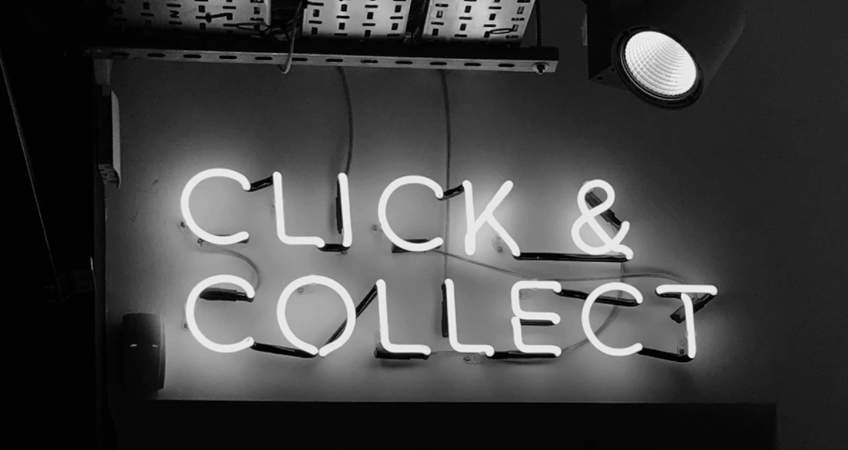
There is no denying the value click and collect brings when delivered to a best practice standard, but what does "best practice" look like to customers?
Though click and collect has now been around for some time, the wide array of experiences customers are being presented with is astounding. This is due to the significant volume of moving parts that must elegantly come together to get this service right...
- Online experiences - making it easy to select the click and collect option and a store
- In store experiences - having a high standard of inventory accuracy and store operations in place
- Having a robust logistical system in place
- Having business systems and processes in place to support great customer experiences
The above four dynamics are unique and different for every retailer in the world. There are no two alike which is why customised planning must take place to ensure click and collect is executed to a high standard.
What has compounded the variation in click and collect experiences is COVID-19. Not only has COVID-19 changed the dynamic in how the new "COVID Consumer" values the click and collect service, the pandemic has changed how consumers want this experience to look like to meet their changing needs.
Recent research proves there will be a higher dependency on click and collect due to consumers wanting to spend less time in physical store locations.
The Opportunity:
One of the many barriers to getting click and collect right is the insufficient investment in change. To assist in improving on this, retailers need to understand the opportunity if planning and investment is properly applied.
Figure 1 below shows the share of online orders that are click and collect for major US retailers.
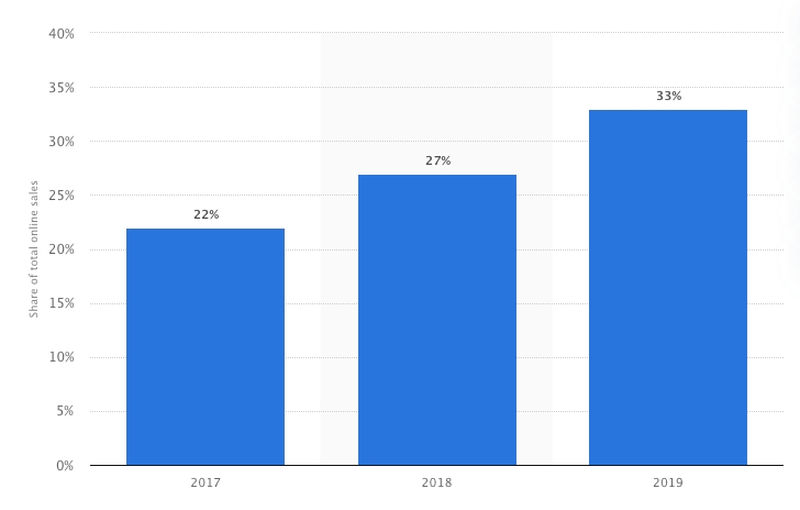
Figure 1 (Source: Statista - 2019)
As a result of COVID-19, the research proves there to be a sharp rise in click and collect for those retailers open and operating their bricks and mortar stores.
Of high interest is the breakdown of who is using click and collect by "generation type". See Figure 2 below...
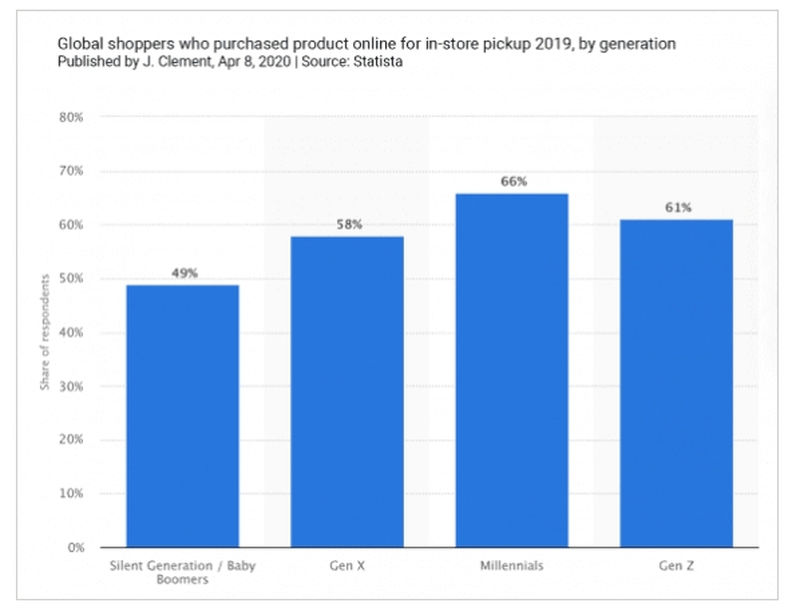
Figure 2 (Source: Statista - 2019)
There is an even spread across all generation types in their adoption and use of this pick up service.
Figure 3 (below) articulates the value people see in using click and collect.
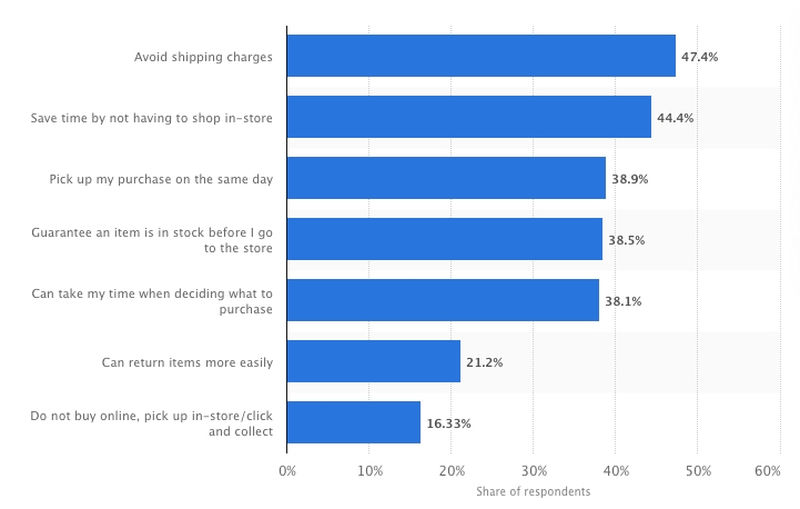
Figure 3 (Source: Statista - 2019)
It's important to understand and recognise what these motivations are. Even though this data comes "Pre COVID", a quick assessment is needed to look at how COVID-19 is influencing the future impacts of click and collect both for retailers and for the new "COVID Consumer".
How does click and collect add value Post COVID?
When looking at the three charts above, having an understanding of these dynamics in a post COVID world helps retailers understand the size of the opportunity in getting click and collect right moving forward. There are four fundamental dynamics to be cognisant of....
#1. Logistics/Supply Chain:
Logistical solutions globally are now seen to be brittle. To resolve this and construct reliable delivery systems will translate to an increase in costs for the retailer. The ability to offer a reliable method for customers to acquire their order becomes the new competitive advantage: click and collect becomes a key method to achieve this.
#2. Increased desire to spend less time in-stores:
As can be seen in Figure 3, a motivation for customers before COVID was "save time by not having to shop in-store". This customer motivation has proven to be amplified as a result of the pandemic.
#3. Greater dependency on the online channel:
COVID-19 has created and/or forced a greater dependency for the online channel with everyone.
The consumer motivations in Figure 3 proves there are consumers who will never be comfortable buying certain products online and having them delivered to their home. But having a click and collect option de-risks the online purchase for them.
#4. Buying in store will increase:
Forbes released research in mid 2019 showing 85% of customers purchase an additional item (or items) when they arrive in-store to pick up their online purchase. Due to the imminent growth in click and collect, this "extra buying" behaviour will grow if prompted.
Best Practice Click and Collect:
To understand what amazing click and collect experiences need to look like in a post COVID world, this service needs to be broken down into three sections...
- The online experience
- The notification experience
- The in-store experience
Notice how this has been broken down from the perspective of the customer: each "section" is experimental in nature.
This is done intentionally to ensure retailers design for what's best for the customer, first and foremost and then design processes and systems to support a customer driven service. The goal is to meet the motivations called out in Figure 3 above.
Most click and collect offerings are designed where the business systems come first. Retailers bow to the influence of legacy technology and their limitations when trying to introduce click and collect.
When business systems are the priority when designing this offer, nobody wins.
Section #1 - The Online Experience:
Education and Expectation Setting:
A key part to getting the click and collect experience right is informing customers of this option and explaining what this service looks like. There are many different motivations to serve, so to explain what click and collect looks like can immediately inform consumers if this will accommodate their own need.
If the customer does not understand it or is not aware of it, and is then confronted with the option in the checkout, it's less likely it will be selected. And because Figure 3 proves there are underlying motivations to using this option, increasing the awareness of click and collect sooner will drive online conversions.
Some examples of how to achieve this education and awareness process...
Delivery Options Content Page:
This is where the full "Click and Collect" story needs to be told. Customers often refer to "Delivery" pages before heading to checkout. Retailers need to explain what this service is and what it looks like. Retailers cannot assume people know this service and they do it regularly.
As stated previously, there are many variations of click and collect on offer.
As a result of the pandemic, many retailers will be dealing with "first time online buyers". These are people who have never purchased online before and will attempt click and collect for the first time ever.
When telling the story of what click and collect looks like, use images explaining the steps in selecting click and collect in the checkout process. Make sure these screenshots are for the mobile version of the checkout, this is where the bulk of the confusion will come from.
Feature this content in header on all devices:
Thanks to COVID-19, delivery options are a pivotal consideration for online buying decision making. Retailers cannot hide this content in the footer. It needs to be featured in a "customer service bar", anchored to the header both on desktop and mobile screens to ensure its seen on every page of the site.
Have a look at Kitchen Warehouse as an example of this in action. On desktop they have it featured strong in the header (see Figure 4), however, on mobile it's nowhere to be seen (see Figure 5).
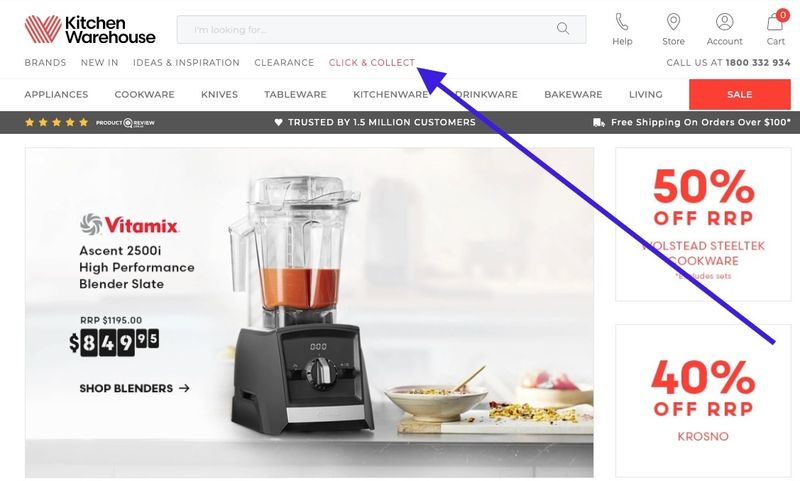
Figure 4
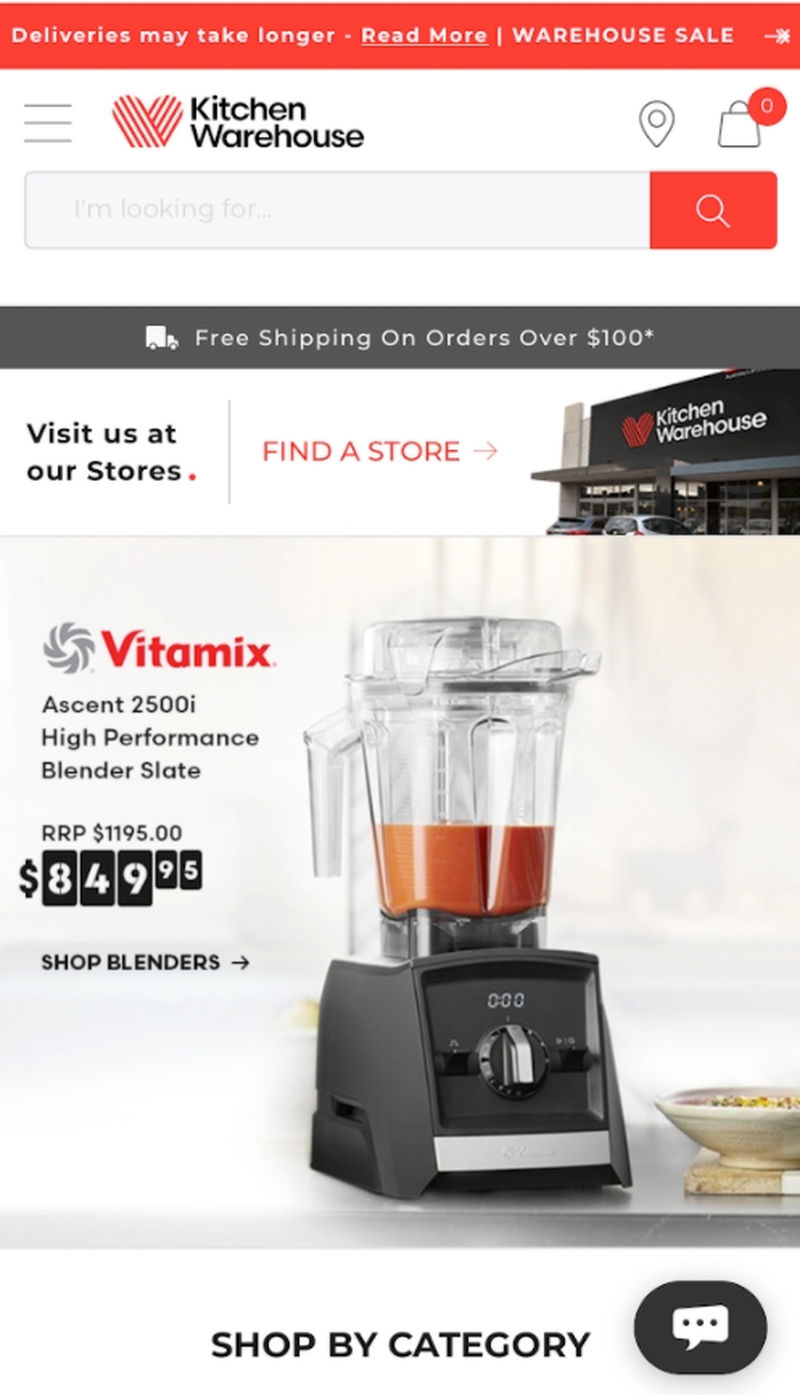
Figure 5
The obvious assumption is this retailer has the majority of their traffic on the mobile device and yet this crucial service offering is hidden from a larger percentage of their audience.
Reliable delivery options is now seen as being as important as free shipping offers to the "COVID Consumer". Screaming these messages will drive online buying.
Product Detail Pages:
This "delivery narrative" also becomes important on product detail pages. Repeat the same messaging on every product page. This becomes crucial on mobile phones because most retailers hide delivery and support content in layered navigation in the footer.
Create a "Delivery Options" tab which sits on the product page so it can show the detail of this pick up service.
John Lewis is a good example of featuring this content on product pages. They have the delivery options call out above the fold with "View Delivery Options" presented as a clear clickable link (see Figure 6).
Once selected, it opens a large pop up, clearly defining all options including click and collect (see Figure 7).
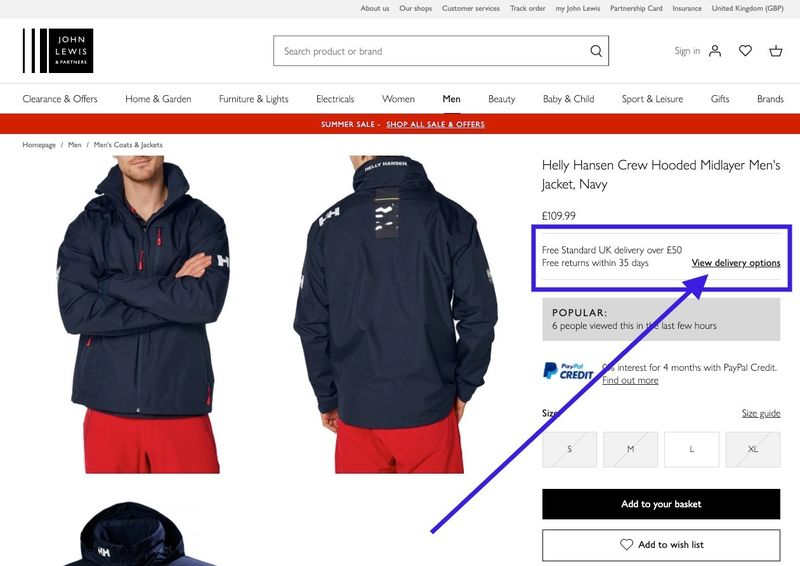
Figure 6
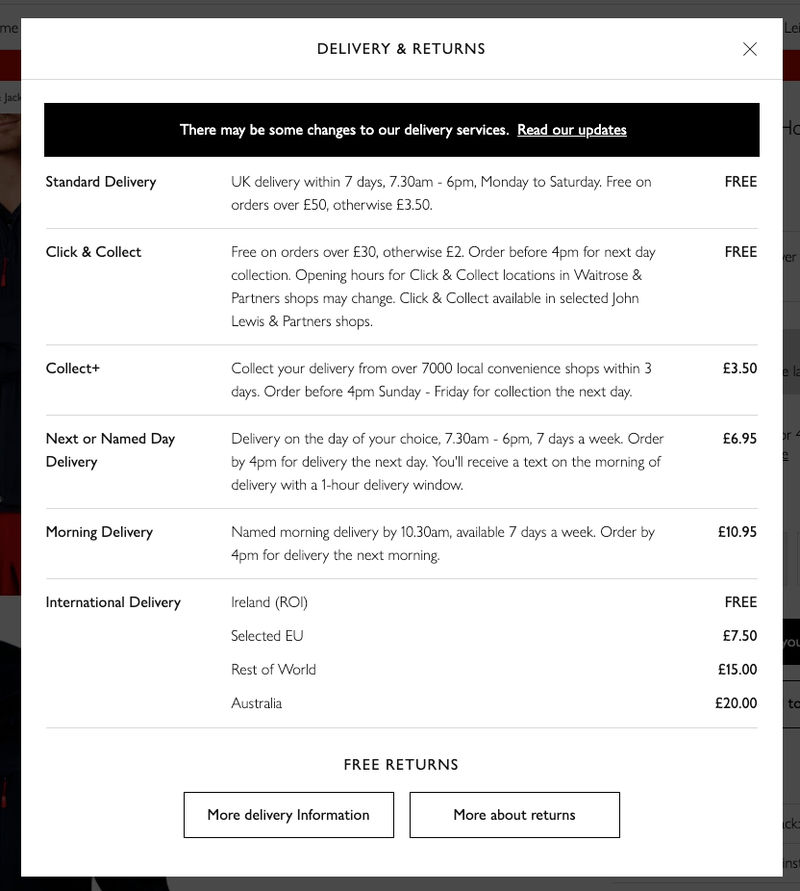
Figure 7
The treatment shown above by John Lewis is also elegantly presented on mobile screens.
Cart Page:
The delivery option messaging also needs to be repeated on the shopping cart page. Research has proven there are many reasons as to why consumers bailout on the cart page, one of which is the lack of clarity for delivery options and delivery costs.
If a retailer can offer a free click and collect solution, this should be presented on the shopping cart page.
Keeping with John Lewis, once consumers reach the cart page, the delivery options for the products in the cart are clearly visible. A great example of this in action (see Figure 8).
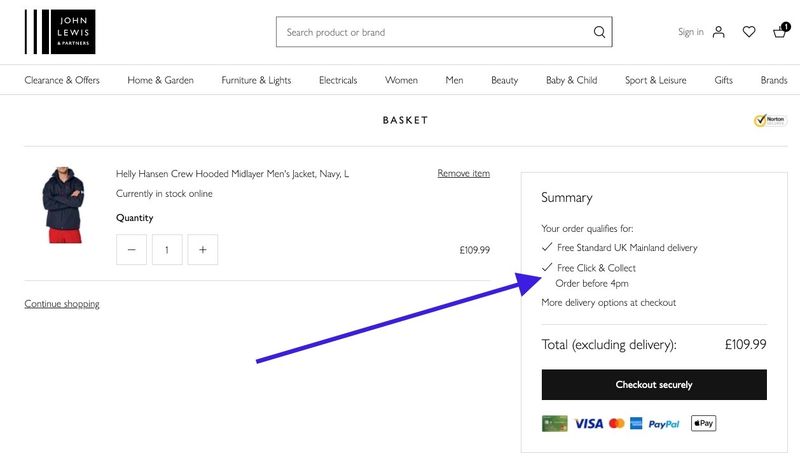
Figure 8
Checkout Process - Selecting Click and Collect:
This is one of the areas of click and collect where the experiences are vastly different from one retailer to another. This experience encompasses the following characteristics....
- Selecting the click and collect options
- Selecting the preferred store location
- Being presented with elegant visual validation
Click and collect is one of the reasons as to why the one step checkout has dropped in popularity in recent years. Having multiple delivery options to choose from increases the visual complexity of one step checkout on mobile devices.
The entire micro experience of selecting click and collect needs to occur on the "Delivery Options" step.
There are specific characteristics this experience must abide by to ensure it is obvious and intuitive across all device types...
- Ensure the customer immediately understands they have choices to either pick up the order or have it delivered to their home
- Offer clear visual cues to make the selection
- Present pricing options for each option
- Ensure the store selection step is easy to activate and select
- Present relevant store details during this process to assist the selection process: address details, hours of operation
- Once the store has been selected delivery clear validation cues
- Ensure the order summary clearly shows the click and collect option has been selected. This enhances the validation.
To illustrate a great example of the above characteristics in action, have a look at the John Lewis checkout experience below...
John Lewis Example:
Once consumers reach the "Delivery Step" they are presented with what's shown in Figure 9 below. A beautifully clean page which prompts the consumer to make a delivery method selection. There is nothing else on this page but what's shown below.
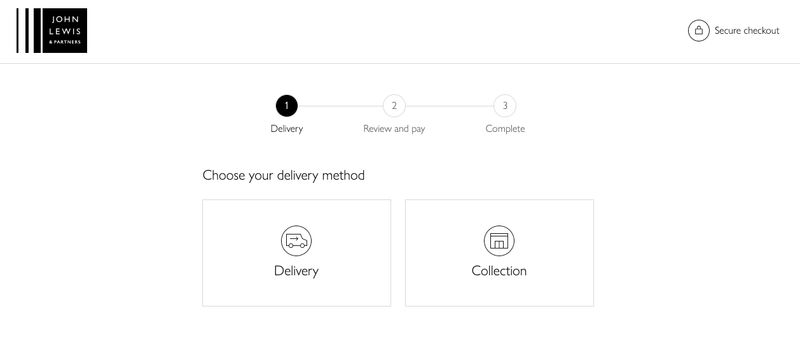
Figure 9
Only once a consumer selects "Click and Collect" are they then presented with the next step which is to select a store location (see Figure 10). This presentation of "find a location" only once a delivery method is selected is the best practice approach to guiding consumers through this process.
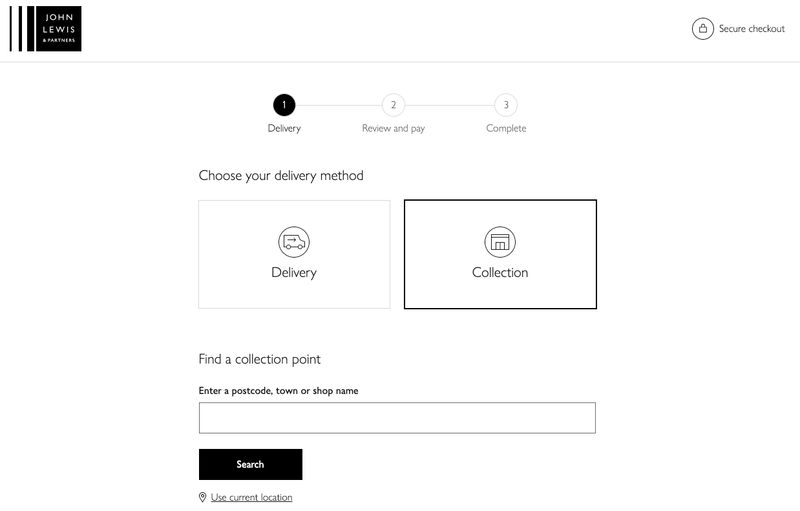
Figure 10
Once a consumer selects a location, they are presented with options showing the distance from their location as well as clear calls to action to "Select shop", making the next steps to this process obvious.
There are also obvious clickable links to view a "Map and opening times" to assist in the store selection decision making.
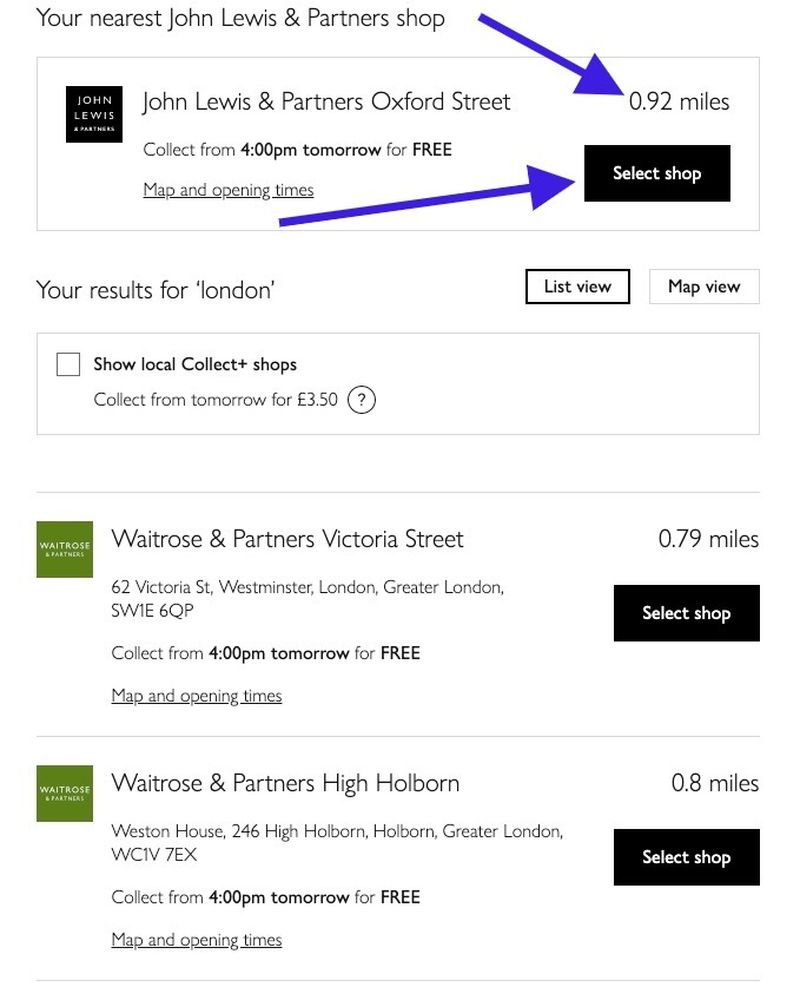
Figure 11
Once a store has been selected there is clear and obvious validation of the selected location. John Lewis takes this experience one step further by offering specific collection days (see Figure 12).
The other point to note is, the "Continue to Payment" call to action now displays making next steps obvious.
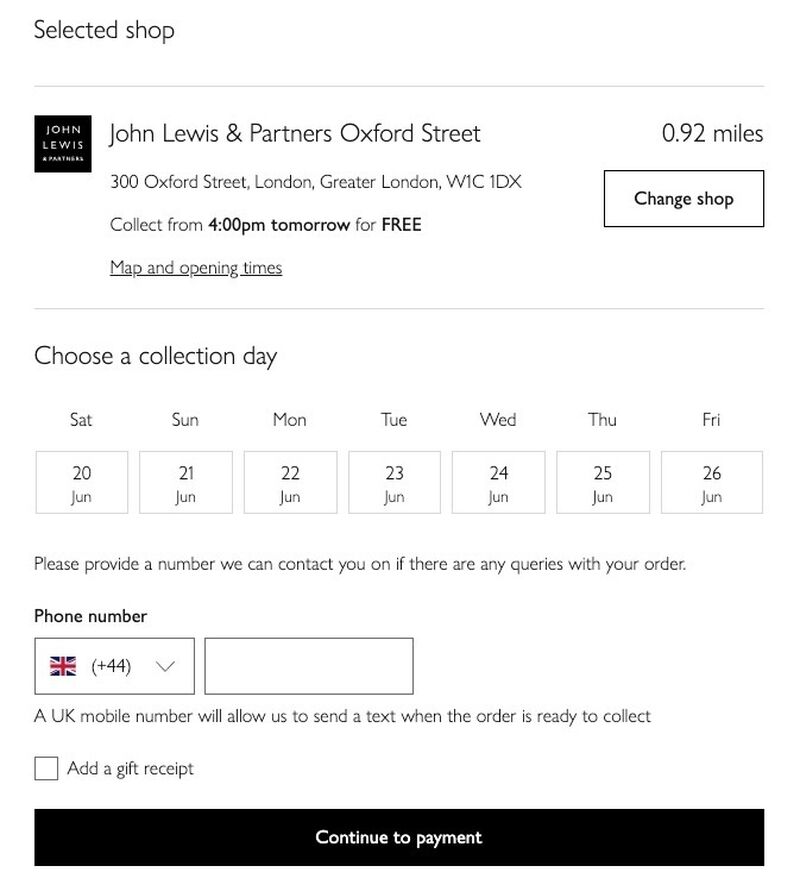
Figure 12
On the payment page, the consumer is again presented with strong visual validation of the click and collect selection (see Figure 13).
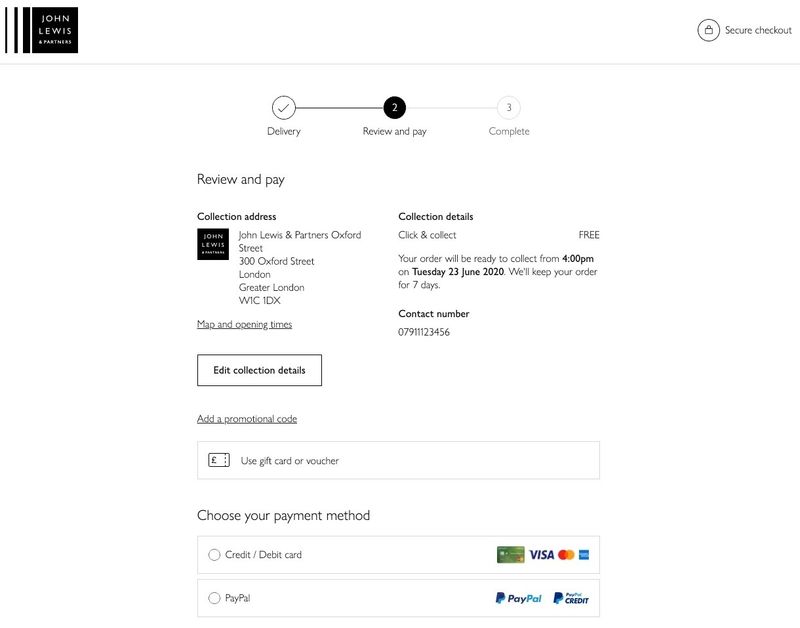
Figure 13
A beautiful example in action.
Section #2 - The Notification Experience:
The second part to the “click and collect” experience comes in the form of sending triggered email updates throughout the click and collect process to keep the customer informed as to what's happening with the order.
For those retailers who must conduct multiple internal steps to complete a click and collect order, this form of notification becomes crucial.
When considering a retailer will be completing thousands of online transactions each month with over one third of these being click and collect, to automate the updates is key to scaling this service.
Put simply, if customers are not adequately notified/updated throughout the pick up experience as to what's happening, the experience becomes a poor one and will result in three outcomes...
- Customers pick up the phone seeking an update - keeping support teams unnecessarily busy
- The likelihood of the customer purchasing more when in store drops
- The likelihood of that customer purchasing from this retailer again also drops
For those retailers starting out and giving click and collect a shot, in the early days its OK to have clunky processes around organising the order. This operational clunkiness can be compensated by over-communicating to the customer.
The ideal scenario is to streamline this process so customers can pick up their order faster than it would take to have it delivered (refer to Figure 3) but for many retailers this is an evolutionary process.
Some examples of the types of notifications required….
“Order notification” email:
Sending an email with specific content about click and collect, defining what the next steps look like for the customer.
“Ordering being prepared” email:
This email helps those retailers who require multiple internal steps to prepare the order and/or have it ready to pick up in a specific store location. If these extra steps cause delays, there should be a message sent assuring the customer the order is being prepared.
“Order ready for pick up” email:
Once the order is ready to be picked up an email is sent which comprises the following....
- A reminder of the store, the location, hours of operation, and contact details
- A reminder of what documentation is needed in order to pick up the order
- Explaining where the click and collect counter is located
- Unique content advertising in store sales or campaigns that are active at the moment
- Unique content presenting complimentary products relevant to what the customer is collecting
“Order not picked up” email:
People are busy and will forget to pick up their order. There is nothing wrong with a gentle reminder after a set period of time to prompt this behaviour.
The majority of physical stores are designed with little space for storage, making this email important.
Section #3 - The In-Store Experience:
The third part of the experience relates directly to the store operations and how the sales people execute the final steps.
The key characteristics which comprise great in store experiences are....
Making Click and Collect counters clear and obvious:
Don't hide these counters. For those retailers where no new counters are being designed, introduce signage over existing counters to make it clear this is where customers come to pick up their orders.
Find the product quickly:
There is nothing more frustrating for a customer then to wait for an extended period of time while the sales employee is trying to find the order in the back room. Retailers need to establish solid processes and systems to ensure all orders are clearly labelled and separated from other inventory to ensure retrieving the order is retrieved in a timely manner.
Make click and collect customers the priority:
These are customers who have already spent money so they should always be the priority. In those instances where staff are wondering who to serve first, it always should be the click and collect customer.
Product presentation - quality check:
Customers want to see the product before taking it away. Though the product will be checked by staff before-hand, customers want their own assurance the product is what they are expecting.
Try it on:
For fashion retail, many customers will want to try it on. Having change rooms accessible becomes important.
It's at this time of product presentation and/or the customer trying on the garment when salespeople can activate up selling.
Offer "Contact-less" options:
Due to COVID-19, the ability for customers to have simple way to pick up their item where no contact can be made with store employees is now part of the "new normal".
Retailers such as Walmart in the US have been testing and trialing lockers that sit outside their stores for the last two years. As a result of COVID-19 this retailer is ramping up their investment and execution of this locker system as an option.
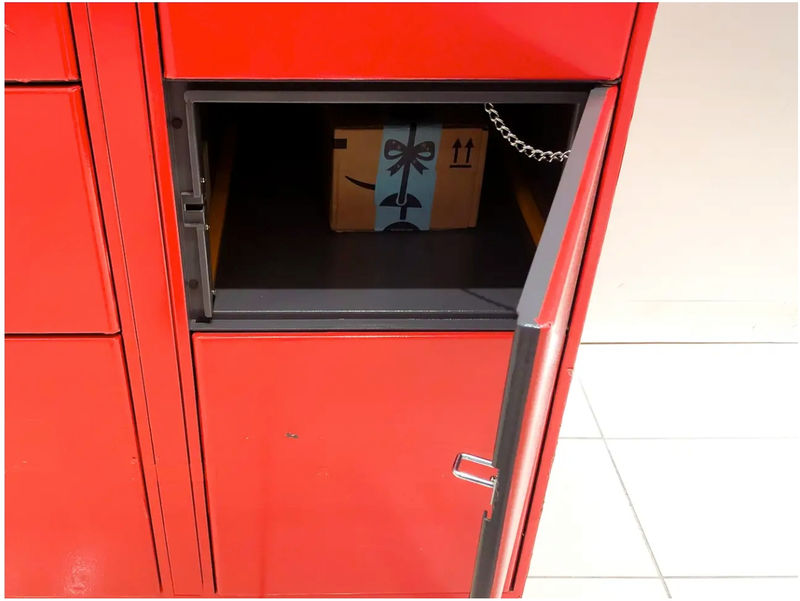
Figure 14
Amazon is doing the same for their Wholefood store locations.
Behind the Scenes:
There are many behind the scenes activities that must come together. The key considerations are...
- Full support of the executive team to ensure departmental collaboration is to a high standard and the right investment is being applied
- The use of the right technologies: eCommerce, email marketing etc...
- The integration and connectivity of that technology to ensure scale
- Processes and store training
- Store incentives for all click and collect orders
- Appropriate planning for the initial rollout of click and collect
- Proper monitoring of click and collect experiences
Monitoring must be in place for the business to be able to gather insights on...
- The experience design of click and collect on the site
- Ongoing interviews with store employees to gauge how seamless or clunky the steps are to complete an in store pick up (from their perspective)
- Ongoing interviews with store employees to gauge how customers are reacting to this service
- Survey data when speaking directly to customers on how they liked/disliked the click and collect service
The purpose of this data is to use it to evolve the service over time and rapidly change things that are proven to be not working.
Conclusion:
As a result of all the moving parts, many things can go wrong in the click and collect experience which is why planning ahead of time is crucial. As long as the customer is the center of all planning activities, retailers will get it right.
Because of COVID-19, the click and collect option will steadily rise in popularity.
In this "new normal", great click and collect experiences will become a retailer's competitive advantage.
Benefits of working with an eCommerce Expert = Results:
When you work with an eCommerce Expert like Greg from Comma Consulting, these are the types of results you can expect...
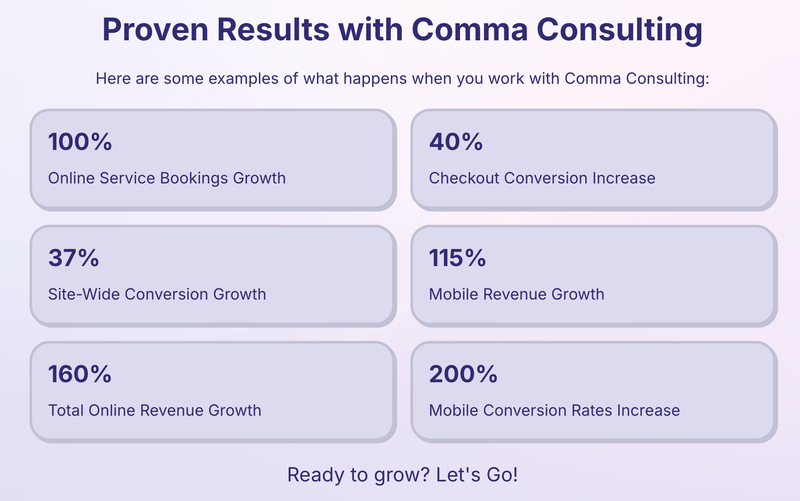
Ready to grow? Let's Go! Click here to contact Comma Consulting now.
This article was as tagged as Best Practice , Digital Strategy , eCommerce Consulting , UX Design